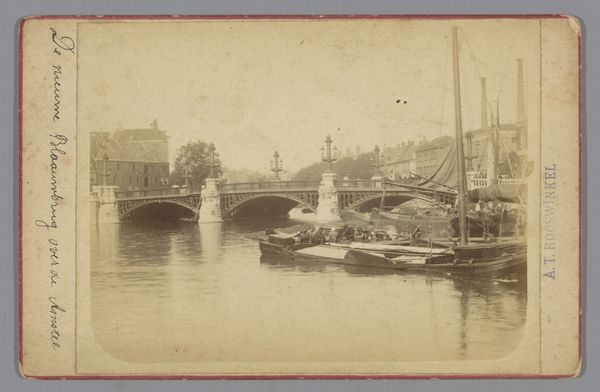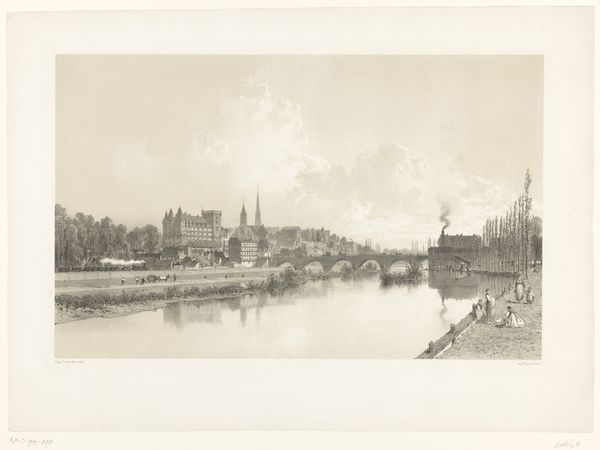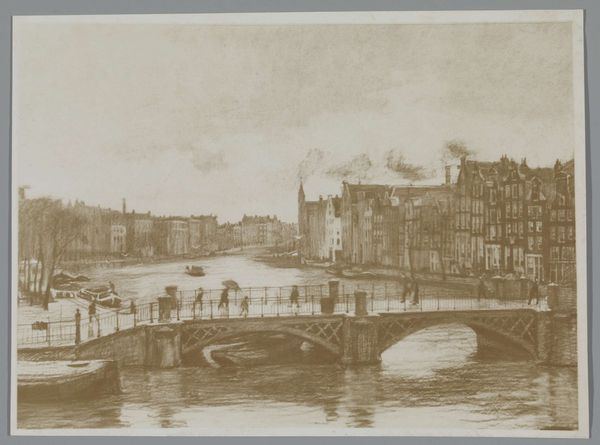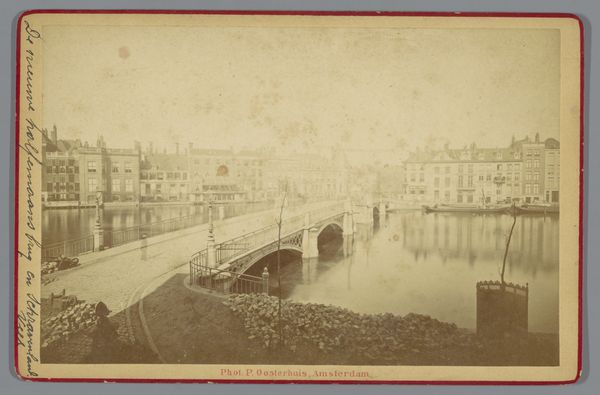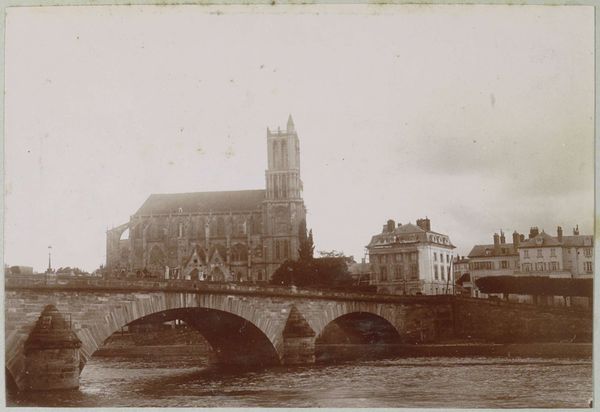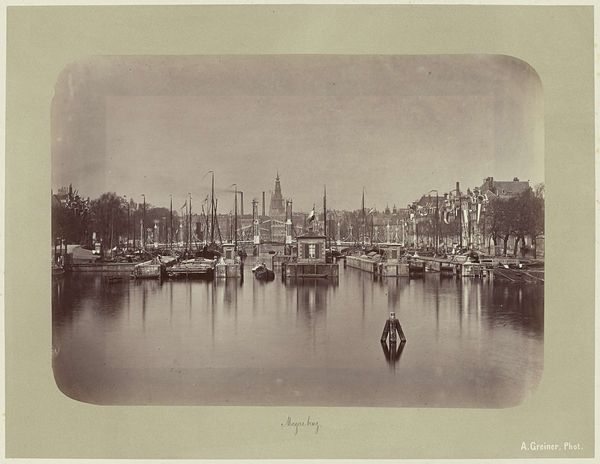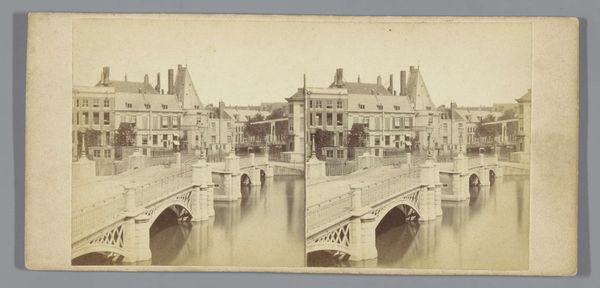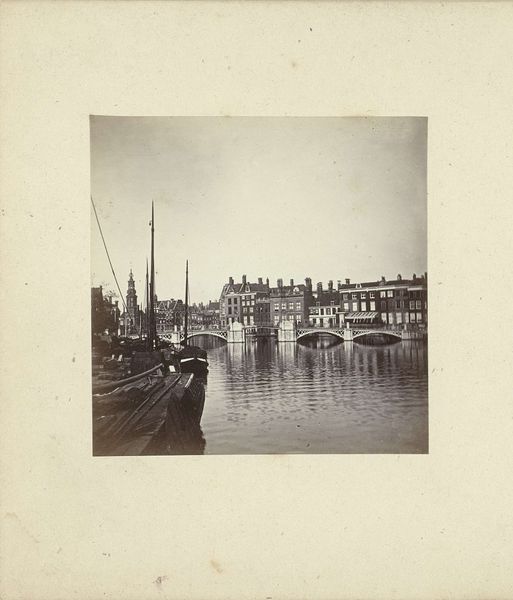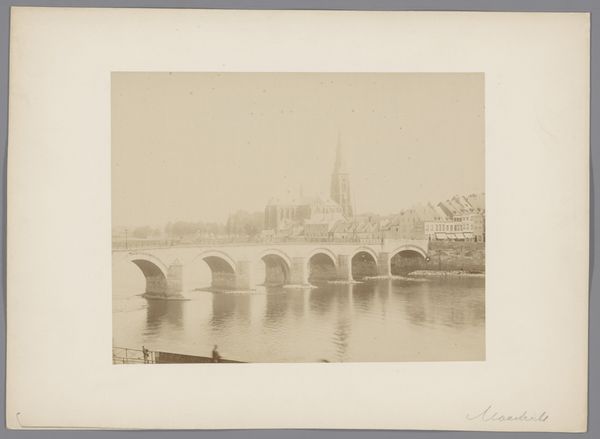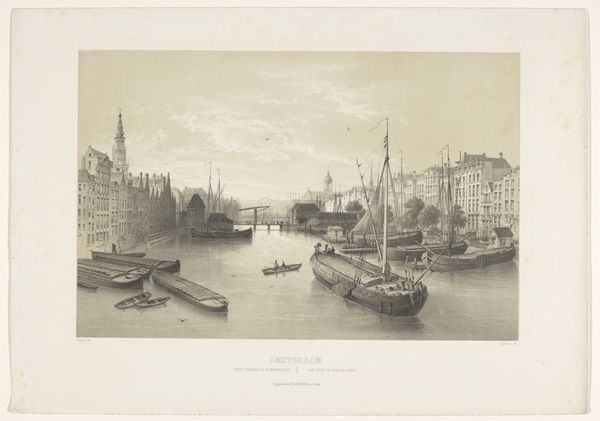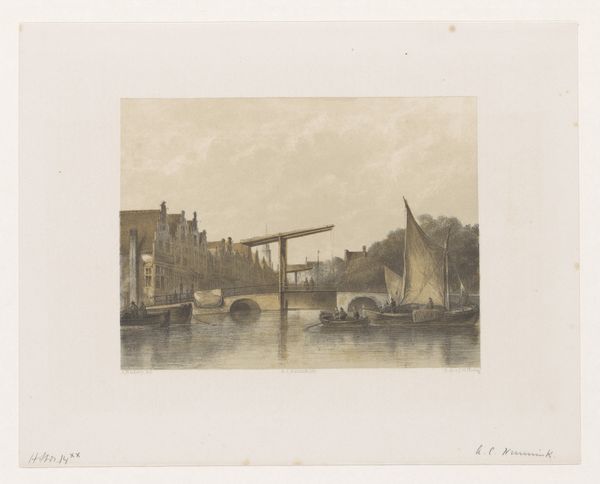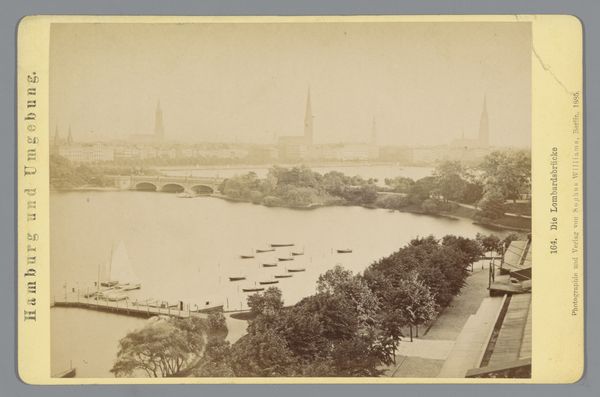
#
excavation photography
#
scenic
#
boat
#
film photography
#
photo restoration
#
atmospheric exterior photography
#
unrealistic statue
#
19th century
#
scenic spot
#
public art photography
#
building
#
shadow overcast
Copyright: Public Domain
This photograph of Worcester, taken from the River Severn, was made by Francis Bedford sometime in the mid-19th century, likely using the wet collodion process. This technique, popular at the time, involved coating a glass plate with a light-sensitive emulsion, then exposing and developing it while still wet. The resulting image, printed on albumen paper, has a distinctive sepia tone and a soft, almost ethereal quality. Look closely, and you can see the incredible detail captured – the texture of the brickwork, the rigging of the boats, the reflections in the water. Yet this was a laborious and alchemical process: each photograph required careful preparation and immediate attention in the field. Bedford’s choice of subject – a bustling industrial city – speaks to the changing face of Britain during the Industrial Revolution. The river, once a vital artery for trade and transport, is now presented as a picturesque scene, a blend of commerce and tranquility. This tension between the industrial and the idyllic is a key theme in Bedford’s work, reflecting a broader cultural ambivalence towards progress and its impact on the landscape and ways of life. The photograph becomes a social document, capturing a specific moment in time and all its complexities.
Comments
No comments
Be the first to comment and join the conversation on the ultimate creative platform.
